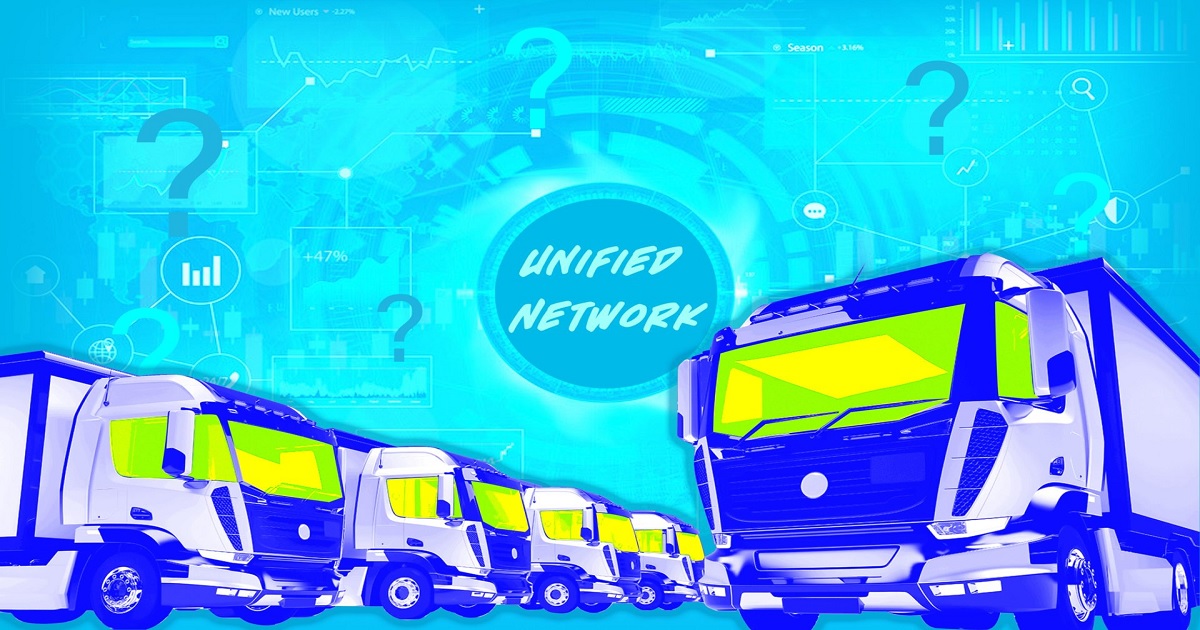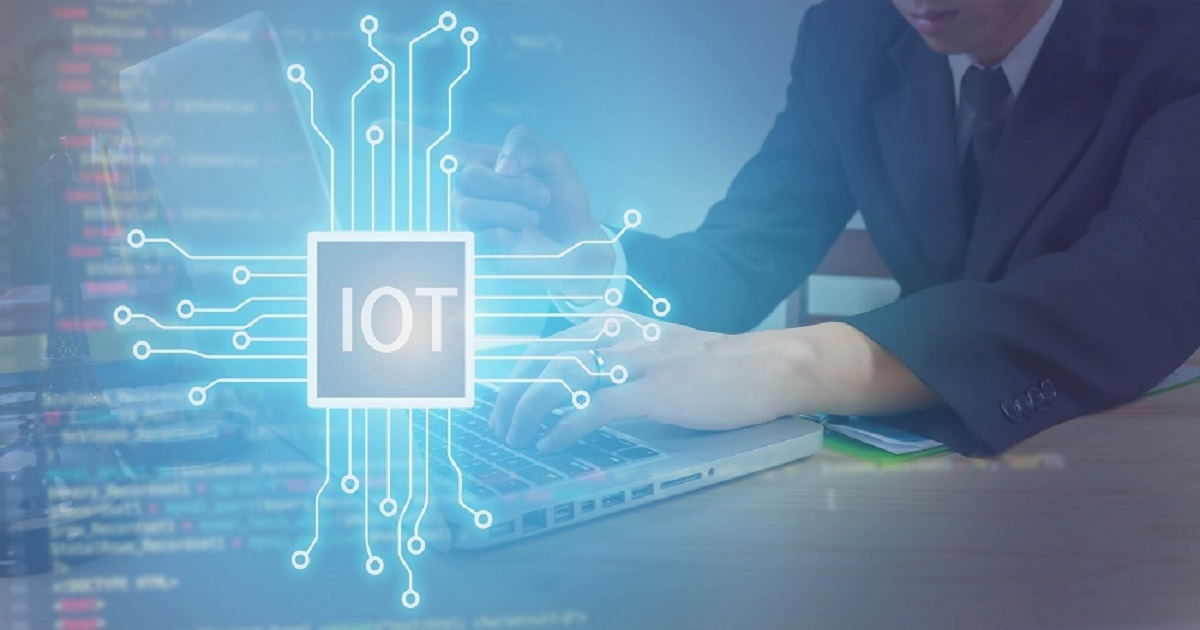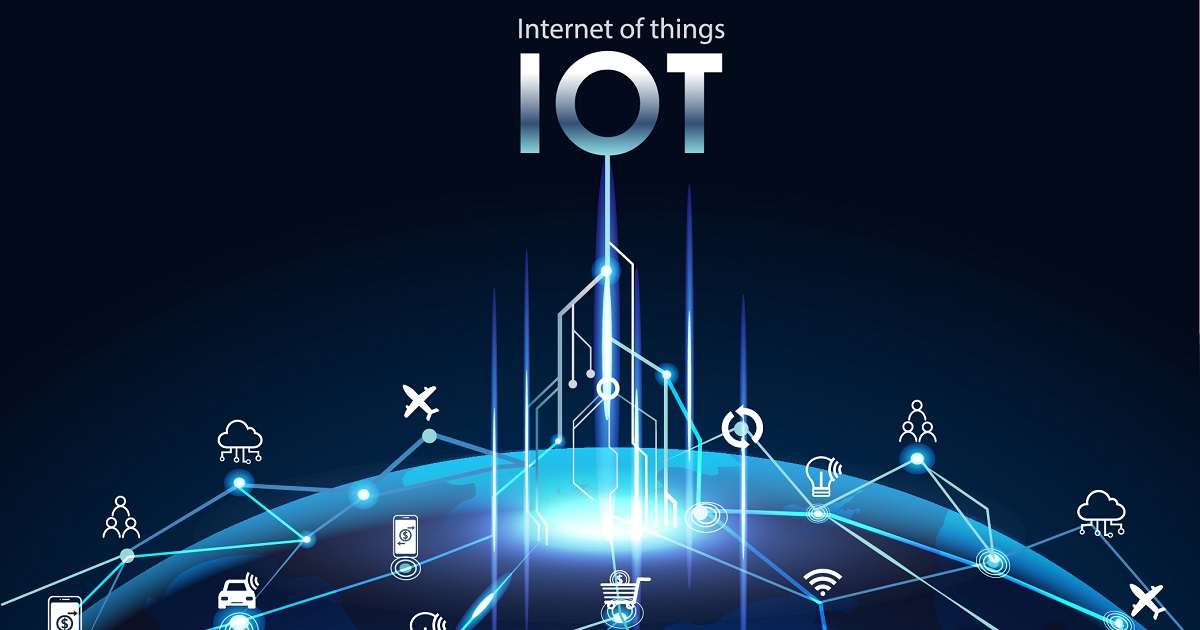
IoT Security
Article | June 28, 2023
As consumer demands evolve, fleet managers are turning to IoT to deliver products faster and more efficiently. The progress being made in edge computing represents the full potential of IoT: the power of data on the move. However, operating on the edge also reveals some of IoT’s greatest challenges: maintaining network security as the number of endpoints multiplies; rethinking traditional business models as industries become increasingly interdependent; and, perhaps most importantly, establishing a seamless, reliable network across borders, cultures, and regulatory environments.
Read More

Enterprise Iot
Article | May 11, 2023
IoT use cases span a variety of sectors and businesses. A typical Internet of Things (IoT) solution consists of a large number of heterogeneous IoT devices with sensors that generate data in a variety of formats at varying rates, which is then processed and analyzed to derive insights. In addition, IoT devices can connect to a network directly or through a gateway device, allowing them to communicate with one another and with cloud services and applications.
Create a layered architecture
An organization's IoT solution's architecture outlines its overall layout, including its physical components (such as sensors and actuators) and virtual components (like services and communication protocols). IoT system complexity can be managed by utilizing a modular strategy that divides the architecture into several layers and focuses on each tier separately.
IoT architectures have a tendency to outsource work to the edges of IoT networks (where the physical devices connect to the cloud). This aids data-driven IoT applications by lowering latency, enhancing privacy, and lowering bandwidth costs.
Devices layer
The device layer components include physical sensors and actuators that link to IoT devices and the IoT devices themselves. Although sensors and actuators are often not considered "smart" devices, they frequently connect to the architectural elements with higher computing power, either directly or indirectly (with the aid of gateway devices).
These devices often use over-the-wire protocols like Ethernet or wireless protocols like Bluetooth, Zigbee, WiFi, LTE, or RFID to transmit data.
Edge layer
The analytics and pre-processing services that are offered at the network's edge are included in the concept of the edge layer. This layer acts as a central integration point for subsequent layers (devices layer). For the upstream layers, it offers routing and device control features. In addition, this layer can be connected to pub-sub systems to convey events and listen in on them.
The size and heterogeneity of the devices and connectivity involved make designing data-driven IoT solutions hard. This article discusses some techniques for creating safe, adaptable, and scalable IoT architectures.
Read More

IoT Security
Article | July 5, 2023
Understanding the Impact of IoT Device Management
The Internet of Things (IoT) industry is growing exponentially, with the potential to become limitless. The current range of existing and potential Internet of Things devices is in itself quite enormous. This also gives businesses an opportunity to pay more attention to the newest technologies.
In ascenario with rapidly increasing numbers of devices, manual management of devices becomes close to impossible, laced with human errors. Moreover, keeping an eye on hundreds of devices one by one to make sure they work the way they should is not an easy task to undertake.
Businesses at the outset of IoT adoption are most often unaware of why they require a device management platform.This is precisely why a device management platform is so crucial.It can effectively connect toall of theconnected devices and get the required information from them in the right way.
An effective device management platform can turn out to be the vital aspect that will define the success of any small or large IoT implementation project. Such a platform would ideally allow organizations to manage their internet-connected devices remotely.
"If you think that the internet has changed your life, think again. The IoT is about to change it all over again!" — Brendan O'Brien, Chief Architect & Co-Founder, Aria Systems.
Why Do Organizations Need an IoT Device Management Platform?
An effective IoT device management platform offers simplified provisioning, centralized management, and real-time insights into all existing devices and integrations to help organizations stay on top of their deployment.
Device management platforms help you keep a check on the growing number of devices while keeping errors at bay, with your growing number of connected devices. It would ensure that you have a clear dashboard and an alerting system as an effective supporting system. In addition, getting involved with IoT device management platforms can also help you in a number of other ways.
It acceleratestime-to-market and helps reduce costs
The management platform enables secure device on and offboarding
It also streamlines network monitoring and troubleshooting
IoT simplifies deployment and management of downstream applications
It mitigates security risks
Evaluating the Future of IoT Device Management
It is predicted that the world will have more than 100 billion IoT-connected devices by 2050. The future potential of the IoT is limitless, and the potential is not about enabling billions of devices together but leveraging the enormous volumes of actionable data thatcan automate diverse business processes.
Critical Aspects of the IoT's Future
The critical aspects of IoT predictionsare fast impacting several categories all across the globe, ranging from consumer to industrial.
IoT Companies and a Circular Economy
IoT firms are assisting in the development of a future with less waste, more energy efficiency, and increased personal autonomy. A connected device system, on the other hand, must be feedback-rich and responsive, and activities must be linked via data in order to be sustainable. Ways to achieve a responsive and actionable system include:
Extending the use cycle with predictive maintenance.
Increasing utilization and reducing unplanned downtime.
Looping the asset for reuse, remanufacture, or recycle.
Common Billing and Revenue Challenges
We are currently moving toward a future where everything from cars to household machines and home security will be sold by manufacturers as subscription services. This will result in organizations selling IoT subscriptions looking for new ways to managebilling and revenue for their business model.
Service diversity
Data monetization
Complex stakeholder network
Cost management
Cohesive IoT Deployment Strategy for the C-suite
With the future of IoTon its way to becoming the most disruptive innovation and compelling technology that will facilitate better services to customers, from a support perspective, being connected remotely with customers' devices offers considerable advantages to service organizations. However, this is also not a new concept; earlier, large organizations and data storage companies were remotely connected to their client systems using dedicated telecommunications links before the commercialization of the internet.
Using the estimates of the exponential rise in connected devices, the IoT offers a wide array of opportunities to effectively improve the industry, such as:
Consumer activity tracking includes in-store applications that assess traffic flow and purchase choices.
Manufacturing, storage, distribution, and retail operations have been optimized to increase productivity and reduce waste.
Energy, inventory, and fleet assets are all used more efficiently.
Improved situational awareness, such as vehicle warning systems
Enhanced decision-making, such as medical equipment that notifies doctorswhen a patient's health changes.
Self-parking and self-driving automobiles are examples of autonomous systems.
An interesting case study with Michelin showed that they were adding sensors to tires to better understand wear over time. This data is important for clients to know when to rotate or replace tires which saves them money and enhances safety. However, this also implies Michelin can move away from selling tires and instead lease them. Because sensor data will teach the corporation how to maintain the tires, Michelin now has a new economic incentive to have tires last as long as feasible. IoT device management plays a crucial role in effectively accumulating and processing data from all the widely distributed IoT sensors.
Conclusion
As more sectors discover the advantages linked machines can bring to their operations, IoT enterprises have a bright future ahead of them. Newer services are steadily being pushed out on top of IoT infrastructure in industries ranging from healthcare to retail, telecommunications, and even finance. Due to increasing capacity and AI, service providers will move deeper into IT and web-scale industries, enabling whole new income streams as IoT device management platforms adapt to address these obstacles.
FAQ
Why Is Device Management Crucial for the IoT?
An IoT device management platform's features may help you save time and money and increase security while also providing the critical monitoring and management tools you need to keep your devices up-to-dateand optimized for your unique application requirements.
What Impact Will the IoT Have on the Management or Administration Sectors?
IoT technology allows for increased collaboration, but it will also free up your team's time from monotonous and isolating duties. For example, routine chores may be encoded into computers, freeing up time to concentrate on higher-order tasks.
What Are the Basic Requirements for IoT Device Management?
The four essential needs for IoT Device Management are as follows.
Authentication and provisioning
Configuration and Control.
Diagnostics and monitoring
Updating and maintaining software.
Read More

Enterprise Iot, Infrastructure
Article | May 31, 2023
Discover the crucial role of big data capabilities in unlocking the potential of IoT for businesses. This article covers their synergy, challenges, and value in decision-making and revenue generation.
Contents
1 Why Big Data and IoT Matter for Businesses
2 Understanding Synergy of Big Data and IoT
2.1 How IoT generates Big Data
2.2 Challenges of Processing Big Data from IoT Devices
2.3 Importance of Big Data in IoT Applications
3 The Value of Big Data and IoT for Businesses
3.1 Improved Decision-making for Businesses
3.2 Generate New Revenue Streams
4 Final Thoughts
1. Why Big Data and IoT Matter for Businesses
The internet of things (IoT) is connecting all types of physical assets to the internet, from smart wearables that track wearer’s vitals to connected industrial units that can report any malfunctions automatically. Big data in IoT is a natural outcome with the growth of IoT devices, with an immense surge in the amount of data being generated.
There are currently over 13 billion connected IoT devices worldwide.
(Source – Techjury)
This data is extremely valuable to businesses as it can help streamline operations, predict trends, and diagnose device issues. Certain functions of IoT devices that are crucial for modern businesses, such as enabling predictive maintenance, depend on the analysis of the data generated every second. However, to maximize the ROI from their IoT ecosystem, businesses must first manage and process the vast amounts of unstructured data they produce. This is where big data capabilities come in.
2. Understanding Synergy of Big Data and IoT
Big data and the IoT are fundamentally different concepts, but are closely connected. Big data is a term that is used for a great amount of data that is characterized by volume, velocity, variety and veracity (or the ‘trustworthiness’ of data). The IoT is a term for physical devices or objects linked to the internet using an assortment of technologies. Understanding the synergy between these two technologies will be critical for businesses looking to leverage their full potential.
2.1 How IoT generates Big Data
IoT is one of the primary drivers of big data growth. The vast number of interconnected devices in the IoT ecosystem generates a massive amount of data every second. This data includes information on user behavior, device performance, and environmental conditions, among others.
The nature of this data makes it challenging to store, process, and analyze using traditional data management tools. This is where big data technologies such as Hadoop, Spark, and NoSQL databases come in, providing the ability to manage massive amounts of data in near-real-time, enabling critical applications of big data in IoT. For businesses, processing IoT data is synonymous with processing big data, due to the nature of the data generated by an IoT ecosystem.
2.2 Challenges of Processing Big Data from IoT Devices
IoT data processing is a complex and challenging task due to several reasons. Firstly, the sheer volume of data generated by these devices is enormous and is only increasing. This requires a robust infrastructure and specialized tools to store, manage, and analyze the data efficiently.
This data is also generally unstructured, heterogeneous, and complex, making it difficult to process using traditional data management and analysis techniques. Moreover, it is often noisy and may contain errors or outliers, which can impact the accuracy of data analysis. Businesses also face a challenge when securing such vast amounts of data. Since IoT devices collect sensitive information such as personal and financial data at scale, it is critical to ensure that data is encrypted, transmitted securely, and stored safely.
Additionally, IoT devices often operate in remote locations with limited connectivity, making it challenging to transmit data to the cloud for storage and analysis. As IoT devices continue to proliferate and generate increasingly large amounts of data, businesses must adopt big data technologies to gain actionable insights from this data.
2.3 Importance of Big Data in IoT Applications
There are several use cases of the IoT where processing large amounts of data is essential. It plays a critical role in IoT applications, providing businesses with valuable insights that can be used to optimize processes, reduce costs, and improve overall efficiency. By collecting and analyzing large amounts of data from IoT devices, businesses can gain a better understanding of customer behavior, machine performance, and other critical metrics.
For example, big data in IoT can be used to identify patterns in customer behavior, allowing businesses to tailor their marketing efforts and improve customer engagement. Additionally, IoT devices can be used to collect data on machine performance, allowing businesses to identify potential problems before they occur, minimize downtime, and optimize maintenance schedules. The value of big data in IoT applications lies in its ability to provide businesses with real-time insights that can be used to drive growth, reduce costs, and improve overall efficiency.
3. The Value of Big Data and IoT for Businesses
Businesses looking to integrate big data in IoT must first consider their data storage and analytics capabilities. By understanding the value of big data technology in capturing and analyzing IoT-generated data, businesses can unlock insights that can help them make better decisions, optimize processes, and create new business opportunities.
3.1 Improved Decision-making for Businesses
IoT and big data technologies offer businesses a wealth of data that can be used to make better-informed decisions. By integrating IoT sensors and devices with their operations, businesses can collect real-time data on customer behavior, operational performance, and market trends. This data can then be analyzed using big data analytics tools to generate valuable insights that can inform decision-making.
For example, operational data can be analyzed to identify inefficiencies and areas for optimization, helping businesses reduce costs and improve efficiency. With the right data storage and analytics capabilities, businesses can leverage the power of IoT and big data to gain a competitive advantage and make better-informed decisions that drive growth and success.
3.2 Generate New Revenue Streams
By leveraging the vast amount of data generated by IoT devices and analyzing it with big data analytics tools, businesses can gain insights into customer behavior, market trends, and operational performance. These insights can be used to create new revenue streams and business models, such as subscription-based services, pay-per-use models, and predictive maintenance services.
For example, IoT sensors can be used to collect data on equipment performance, allowing businesses to offer predictive maintenance services that help prevent equipment breakdowns and reduce downtime. Similarly, customer data can be analyzed to identify new revenue opportunities, such as personalized product recommendations and targeted advertising. With the right strategy and investment in IoT and big data technologies, businesses can unlock new revenue streams and create innovative business models that drive growth and success.
4. Final Thoughts
Big data in IoT is becoming increasingly important for businesses, and the future prospects are bright. As IoT continues to grow and generate more data, businesses that can effectively analyze it will gain a competitive advantage, leading to increased efficiency, reduced costs, and higher ROI. To fully realize the benefits of IoT, businesses must develop big data analytics and IoT devices in tandem, creating a feedback loop that drives continuous improvement and growth. By embracing these technologies, businesses can make data-driven decisions and unlock new insights that will help them thrive in the years ahead.
Read More